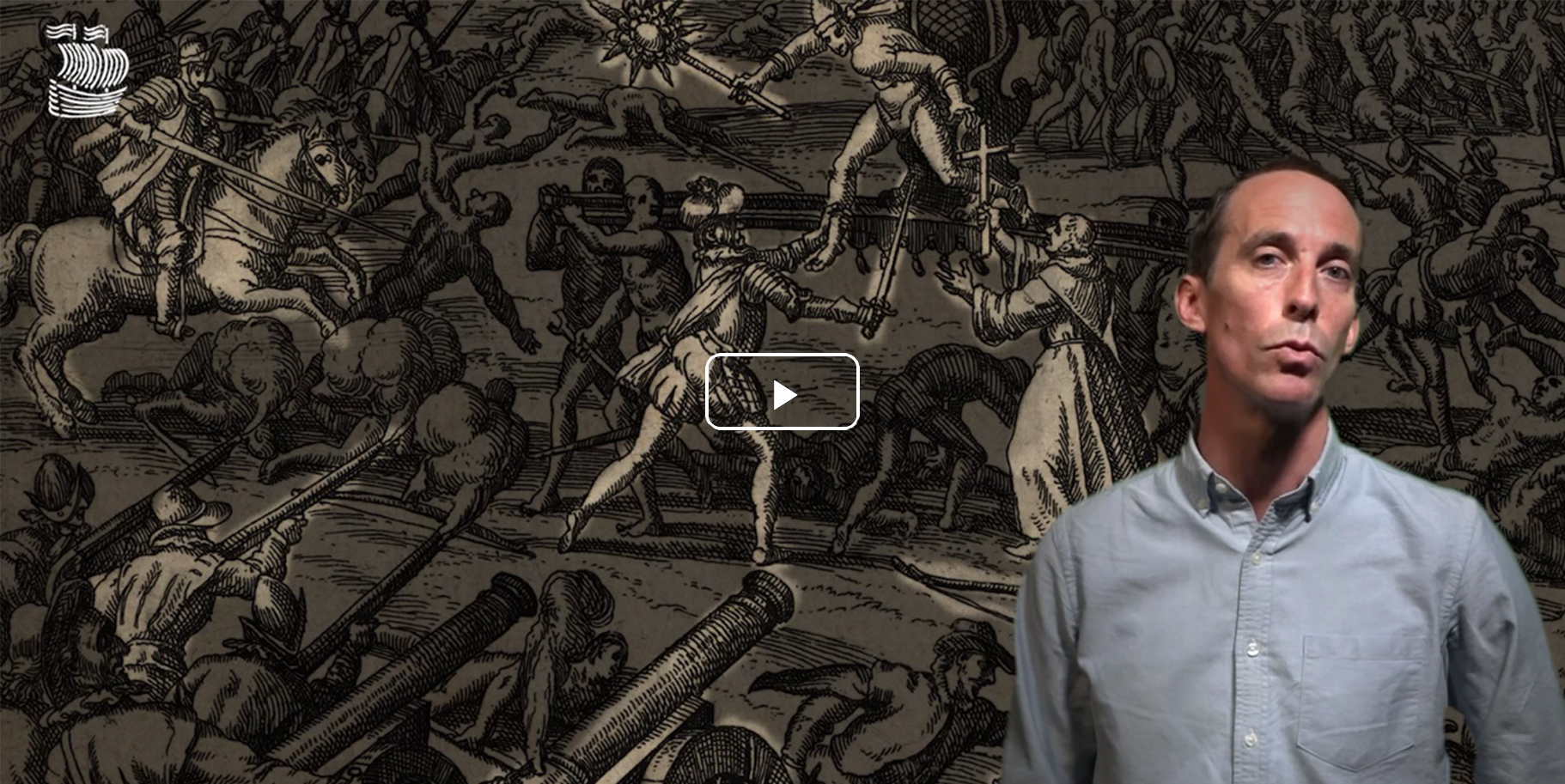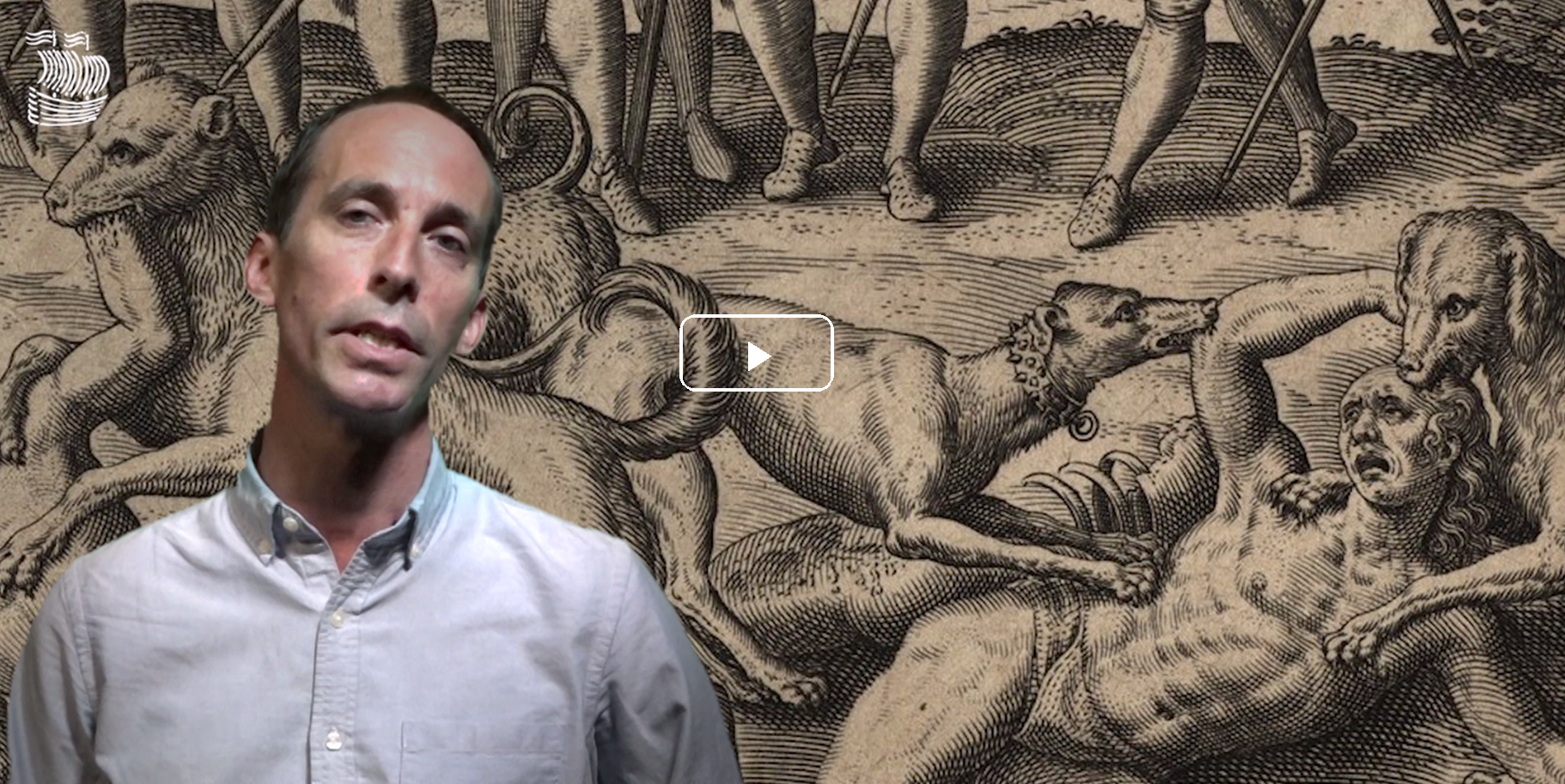The De Bry Collection
The De Bry collection, composed of more than twenty-five volumes,
amounts to a vast collection of travel narratives illustrated with prints.
Today, it is not only unthinkable to acquire these volumes,
but nearly as difficult to view them.
The Bibliotheca Bodmeriana possesses an unparalleled holding,
now entirely digitised.
In just thirty years, from 1492 to 1522, three exploratory voyages opened the world for Europe. Christopher Columbus discovered the Americas in 1492, Vasco da Gama reached the Indian Ocean via the Cape of Good Hope six years later (1498) and the fleet led by Ferdinand Magellan, who lost his life in the journey, completed the first circumnavigation in 1522. Starting then, Europeans began to settle in the four corners of the world and their testimonies elicited a curiosity the world had never before seen, as attests the subsequent explosion of geographic literature during the 16th century. Travel narratives were published at a staggering pace and were both translated into every European language and reprinted, often many times, throughout the continent. The singular features of distant lands, encounters with previously unknown peoples and explorers’ adventures dazzled readers and made fortunes for booksellers. And yet, despite the circulation of these narratives, as detailed as their descriptions were, these were stories to be read and not seen. With few exceptions, images were entirely absent from the documents recounting the Great Discoveries, leaving the reader to imagine what was contained in the text. With its roughly six hundred prints, the De Bry collection will allow Europeans to see, often for the first time, what these travellers described.
These volumes are divided into two series. The West Indies series (also called India occidentalis and Great Voyages, dealing with the exploration and colonisation of the Americas, numbers thirteen volumes with two supplements. The East Indies series (also called India orientalis or Lesser Voyages), whose texts treat primarily Africa and Asia, spans twelve volumes with two supplements.
The first volume of the Great Voyages (1590) was published in German, Latin, French and English, while the others appeared only in German and Latin.
The number of copies published by the De Bry house is unknown, but today each volume is rare and valuable, making the complete collection here absolutely exceptional. In the 18th century, one could read in the Encyclopaedia that “this complete collection is sought after […] for its scarcity.” Today, it is not only unthinkable to be able to acquire these volumes, but nearly as difficult to view them. One might find a certain volume in a library, another volume in a different volume in another, but rarely two complete series in the same place. In light of this, the Bibliotheca Bodmeriana’s holding is truly exceptional, since it includes not only the complete, twenty-nine volume Latin version from the first edition, but also several parts from the second edition, even duplicates of some. The entirety of the holding has been digitised and will soon be available to the public.
In parallel, our website makes it possible to view the complete version of the Latin edition and make sense of its structure, complexity and richness with the aid of explanatory notes pertinent to the fifty texts and six hundred prints that make up the collection.
Matthieu Bernhardt
University of Geneva
The De Bry Collection Illustrations:
Origins and Aim
By the 16th century, there were finally some images from the recent geographic discoveries, but they were few in number and often quite basic (such as the woodblock prints from Hans Staden’s Brazilian travelogue). For this reason, the De Bry Collection—the first volume of which appeared almost exactly one century after the discovery of America (1590)—marks a decisive step in the visual representation of the world outside Europe. It does so both in the number and variety of the illustrations... Read
The Northeast Passage
In the 16th century, the Cape of Good Hope route was tightly controlled by the Portuguese, and very few fleets reached Asia by the West (via Cape Horn). The Dutch, driven by the promise of Eastern riches and enabled by their navigational prowess, were motivated to find alternative routes to these two. The majority of Dutch travel narratives were reprinted, often in abridged form, and frequently illustrated with prints from the original editions... Read
Representing French Florida (1564-65): from 16th-century prints to graphic novels.
The graphic novelist Jean Dytar, on the occasion of the Bodmer Lab festival, 2018, gave a riveting presentation on his work for the creation of Florida, published that year with Éditions Delcourt. Florida both draws inspiration from, and tells the story of, prints from the Theodor de Bry Collection, selected from the Martin Bodmer Foundation’s holdings and digitised by the Bodmer Lab.





